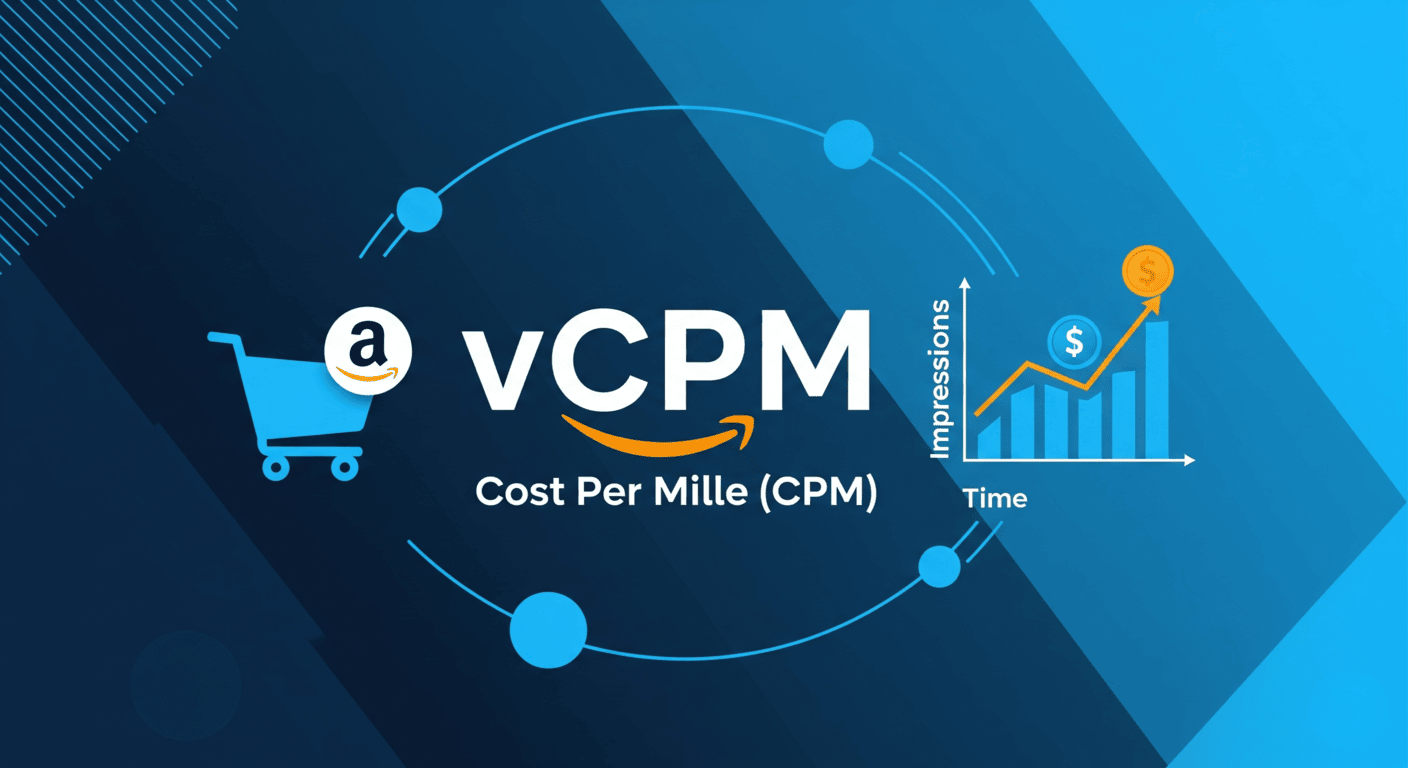Amazon continues to expand its advertising options, and one of the most misunderstood formats is the vCPM campaign. Many sellers see the low ACOS numbers reported in the Ad Console and assume vCPM is a winning strategy; however, the reality is often very different.
In this blog post, we’ll break down what vCPM really means, how attribution works, why reported metrics can be misleading, and when (if ever) vCPM campaigns make sense for your brand.
What is vCPM in Amazon Advertising?
- v = viewable
- CPM = cost per mille (thousand impressions)
Unlike CPC (cost-per-click) campaigns, where you only pay when a shopper clicks, vCPM charges you for every 1,000 viewable impressions.
👉 Amazon defines a “viewable impression” as 50% of your ad being visible for at least 1 second.
That means you’re paying for exposure, not engagement.
How vCPM Attribution Works
Attribution is where most advertisers get tripped up.
- CPC campaigns → Count only sales from shoppers who clicked your ad.
- vCPM campaigns → Count sales from shoppers who either clicked or viewed your ad.
Here’s the catch:
By default, the Amazon Ad Console combines view + click sales when reporting ACOS.
This can make vCPM look far more efficient than it really is.
Example: In the console, you might see 12% ACOS. However, when you pull the bulk file or Sponsored Ad Reports (click-only attribution), the reality could be an ACOS of 300% or more.
How to Properly Evaluate vCPM Campaigns
If you’re running vCPM ads, don’t rely solely on the Ad Console. Instead, use one of these two methods:
1. Bulk File Method
- Download a Bulk File → This lets you compare view + click vs. click-only sales.
- Look for two ACOS columns → One labeled “views and clicks” and one unlabeled (click-only).
- Use Amazon Marketing Cloud (AMC) → For a deeper view into purchase paths and true incremental lift.
- Set separate ACOS targets → For example, if your CPC ACOS target is 35%, you may need to accept 70–75% ACOS for vCPM to make sense.
2. Targeting Report Method (Sponsored Display)
- Download the Sponsored Display Targeting Report.
- In this report, you’ll see two separate sales columns:
- 14 Day Total Sales → Includes both views + clicks (inflated/bogus).
- 14 Day Total Sales – (Click) → Shows only click-based sales (accurate).
- Always use the click-based sales data to calculate ACOS and performance for Sponsored Display vCPM campaigns.
👉 By using these methods, you can separate “real” performance from inflated view-through attribution and make smarter budget decisions.
When Do vCPM Campaigns Make Sense?
Despite their risks, vCPM isn’t always bad. There are scenarios where this model works:
- Novel or unique products → Items that need awareness before purchase (e.g., “Shark Tank” style products).
- Highly engaging creative → Strong visuals with high CTR (>0.5%) can make vCPM more cost-effective.
- Brand awareness campaigns → For long-term strategies where top-of-funnel exposure matters.
- Small budget allocation → Typically no more than 5% of your total ad spend.
In short: vCPM is better suited for awareness, not direct response sales.
Key Takeaways
- vCPM campaigns often appear profitable in the Ad Console, but that’s because Amazon combines view + click attribution.
- Real click-only ACOS is usually much higher — sometimes 300%+.
- Use bulk files, Ad Reports and AMC for accurate performance tracking.
- Limit vCPM to specific awareness-driven goals and keep spend small compared to CPC campaigns.
Final Thoughts
Amazon vCPM campaigns can be a useful tool for building awareness, but they’re rarely the best choice for driving efficient, bottom-funnel sales. Sellers who don’t understand attribution risk overspending on campaigns that look great in the dashboard but bleed profit in reality.
If your brand is considering vCPM campaigns, make sure you have the right tracking and expectations in place.
👉 Want expert guidance on structuring your Amazon ad strategy? Contact us to ensure every dollar of ad spend drives measurable results.


